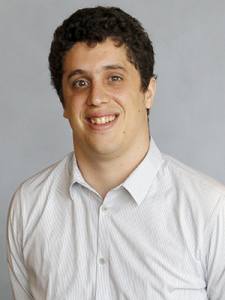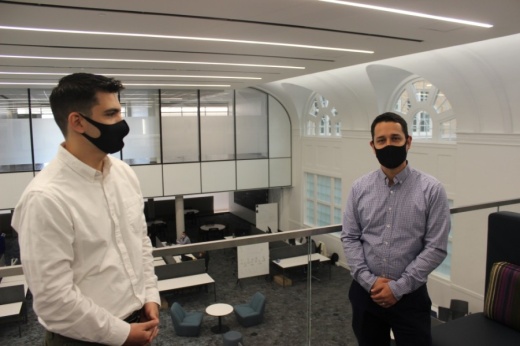A few months ago, some of those same individuals may have been riding around in armored tanks. They are U.S. Army engineers, medics or field officers who, in January, joined the first cohort of the Army Futures Command Software Factory. The Software Factory, which will host Gen. Mark Milley, chair of the Joint Chiefs of Staff, for a ribbon-cutting ceremony April 15, aims to help American soldiers solve technology challenges of the future by equipping them with better tools.
"It's a very countercultural thing in the Army to say, 'I'm going to take a rifle out of a soldier's hands, and I'm going to give them a keyboard,'" said Maj. Vito Errico, co-director of the Software Factory. "That's exactly what we're advocating for here."
The first cohort of soldiers 25 soldiers started in January. The next is set to join the team this summer, along with five civilians. Each of the soldiers will serve three years in their roles at the Software Factory, which means that once the team is fully ramped up, there will be 180 individuals on-site, according to Maj. Jason Zuniga, the Software Factory's other co-director.
The soldiers coming to Austin are software developers, designers, product managers and platform engineers who, after a six-month accelerator program, will tackle specific problems by developing technology designed for soldiers.
The Software Factory team came to Austin from across the country and vary in rank from private first class to captain. First Lt. Rachelle David, an engineer officer, was stationed in South Korea for a year before she applied to join the Software Factory.
"I came here so that I can really build on the academic background that I had in computer science and mathematics and really put it to use to better the Army," David said. "Because previously, this hasn't really been something that the Army has done."
David's experience is similar to that of many applicants, Zuniga said, many of whom were looking for an outlet for their interests.
"Candidly, a lot of Army leaders thought that we would have to lower the barriers to entry in order to find those skill sets. But with almost a half a million people in the Army, we knew that there was probably some [talent] hiding somewhere in the forest," Zuniga said. "We were able to tap into some underutilized talents that individuals in the Army doing other jobs already have."
Aside from solving problems on the battlefield for soldiers, the Software Factory will also help the Army retain its personnel, according to Army Futures Commander Gen. John M. Murray, who told the Austin Community College board of trustees April 5 that 11 of the 25 soldiers in the first cohort were considering getting out of the Army before acceptance because "the Army was not fully utilizing their talents."
Within three weeks of applications opening, Murray said, the Army had more than 20,000 applications for the first cohort's 25 spots.
Locating the Software Factory at ACC will create what Errico called a "mini-innovation ecosystem" at the Rio Grande Campus, which is approaching the end of a four-year, $49 million renovation project to bring new classrooms to the historic building built in the 1920s. ACC has said its goal is to develop two- and four-year degree tracks at the campus while connecting soldiers and students with tech industry partners.
"I think their students will benefit immensely from our presence, and we'll benefit immensely from their presence. I don't think we could have drawn it up any better," Errico said.





